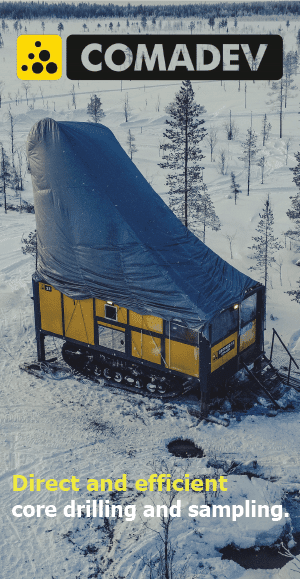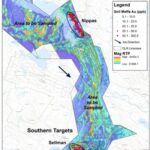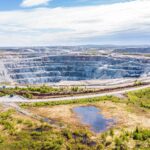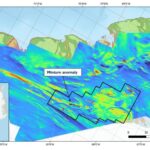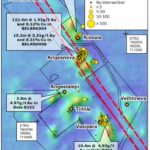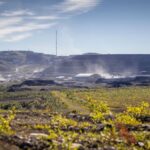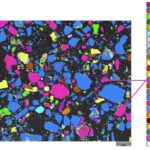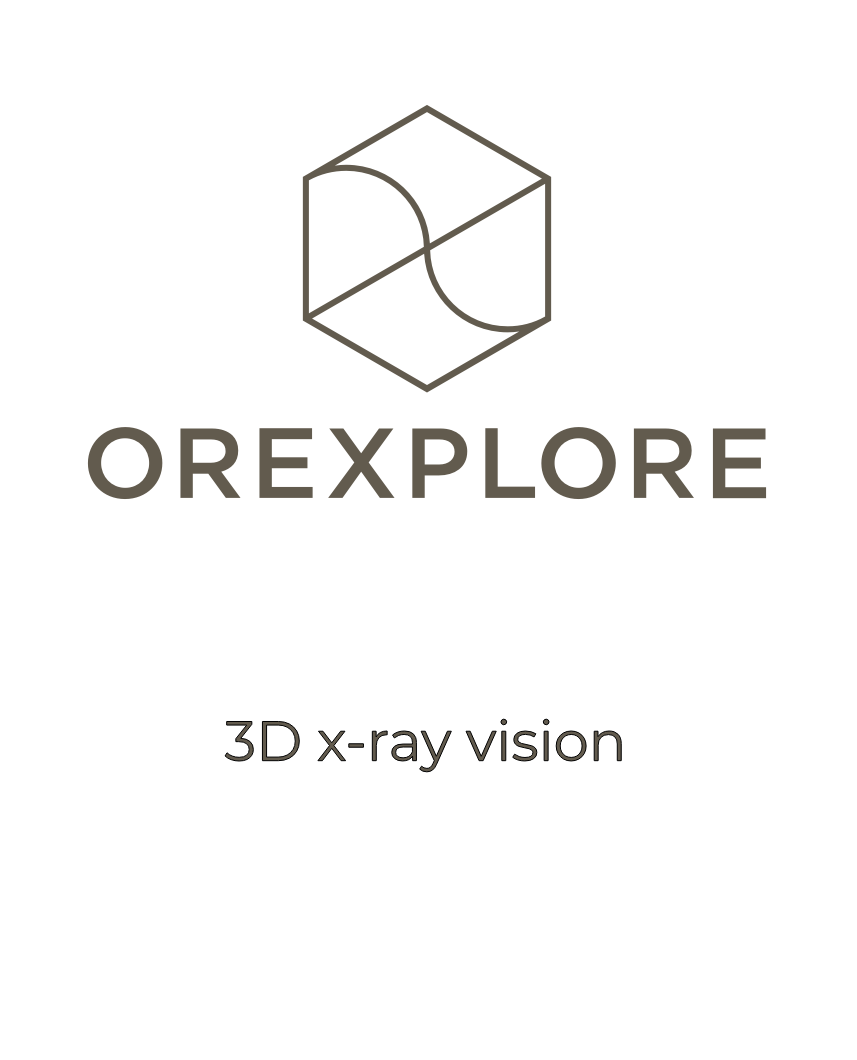Join me as I dive into the controversial topic of deep sea-mining. In this article, we’ll take a detailed look at the deep sea’s geology, resource potential, and current legal status on both a Global and Nordic level.
Not long ago, Norway made headlines by allocating a large part of its extended continental shelf for deep-sea mining. Having not followed this debate since my student days I thought it was time to take a look at how things evolved and what that could mean for northern Europe.
So, what could be unearthed from the seafloor that gets explorationists excited but leaves environmentalists at unease? In short, the deep sea contains significant amounts of metals that could help alleviate the supply chain constraints we are likely to face in the near future. The seafloor is estimated to hold the majority of our planet’s nickel, cobalt, and manganese, as well as up to 30% of its total copper resources. However, their extraction might come at a high price, as the impact of mining activities on deep-sea ecosystems is not yet fully understood.
To get a grasp of the possibilities, as well as potential ecological issues arising from this new industry, it’s best to start with a brief look at the seafloor’s architecture.
The Deep Sea Architecture 🌊🐙
While most of the world’s oil and gas deposits are located on the continental shelf, in relative proximity to the coast, the economic metals in our oceans are generally found further offshore, often at significant depths of up to 6,500 meters. Where and in what form these metals occur is largely controlled by underwater topography and geology. Generally, three types of mineral deposits exist in the deep sea: polymetallic nodules located on the abyssal plains (the vast, generally flat ocean floor between the continental rise and mid-ocean ridges), cobalt crusts associated with seamounts, plateaus, and ridges, as well as massive sulfide deposits related to volcanic activity.
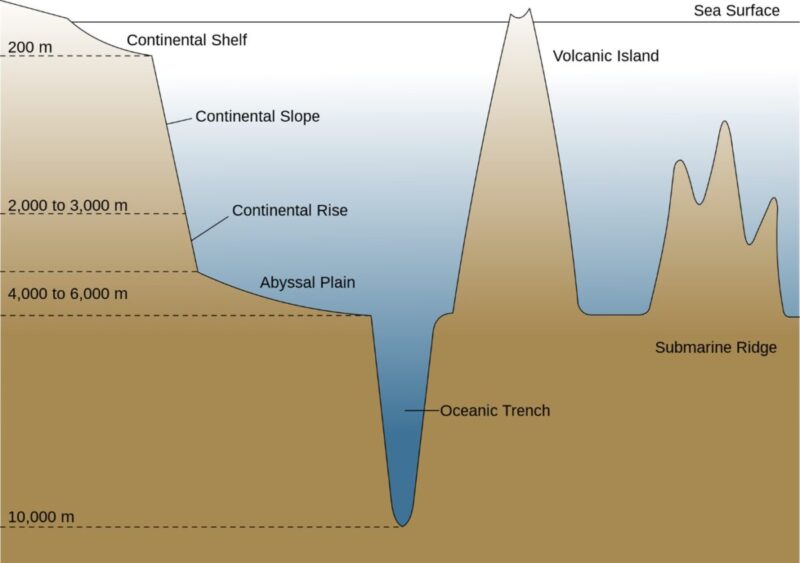
Polymetallic Nodules 🔩⚪
Polymetallic nodules, often referred to as manganese nodules, form egg- to potato-sized accretions of metal that cover large parts of the abyssal plains, where they lie partly or fully buried in the soft sediment on top of the seafloor. Although sometimes found at shallow depths, they are most abundant at depths between 3,500 and 6,500 meters.
The nodules form by the accretion of concentric layers of mostly iron and manganese hydroxide around a small nucleus (such as a shell or rock fragment) and grow only a few centimeters over several million years.
While they only cover a thin layer on top of the seabed, the widespread distribution of these nodules and their respective metal content—approximately 25% manganese, 1% nickel, 1% copper, and 0.2% cobalt—makes them a globally significant resource for these metals.
Although found in the deep sea worldwide, the richest and best-understood occurrences are located in the eastern Pacific between Mexico and Hawaii, in an area commonly referred to as the Clarion-Clipperton Zone (CCZ).
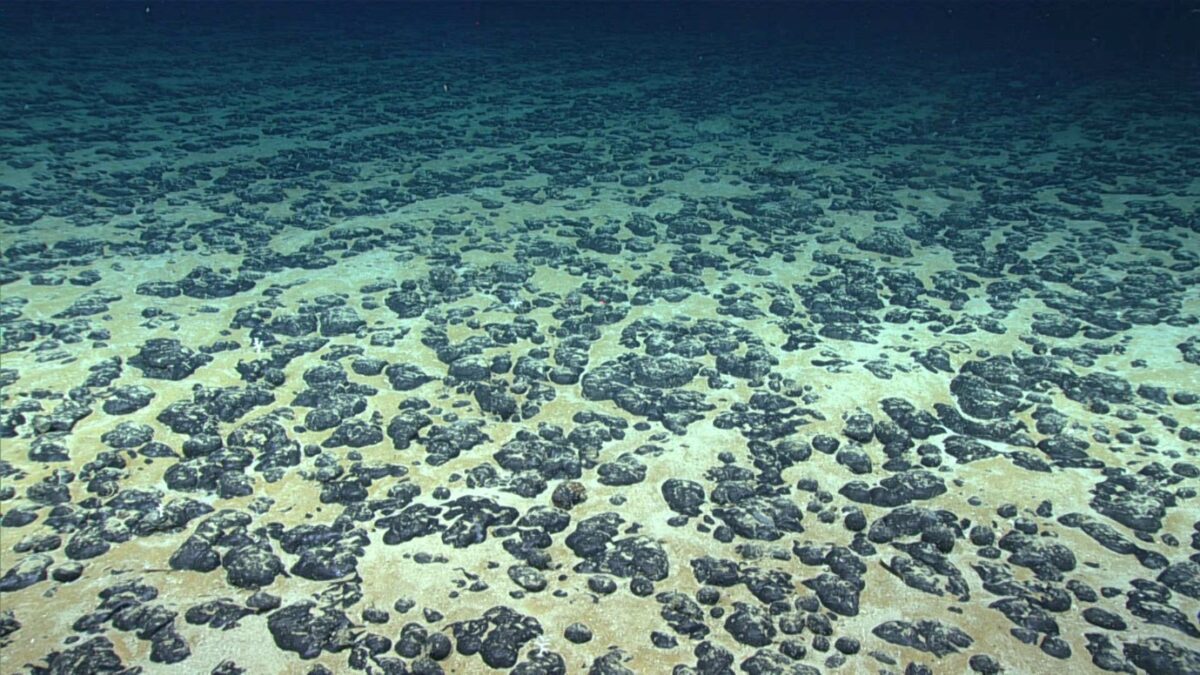
Manganese Crusts 🏔️🌊
The second important type of deep-sea floor deposits are cobalt-rich ferromanganese crusts. Unlike nodules, these crusts grow directly on the bedrock and are therefore associated with undersea ridges, mounts, or plateaus, where the bedrock is exposed, and metals are trapped by alternating water flows induced by the uneven topography. They are known to occur at water depths between 600 and 7,000 meters, with economically viable metal grades usually found between 800 and 2,500 meters.
The crusts initially form through the precipitation of manganese oxide and iron oxide-hydroxide, which subsequently attract other metals like cobalt, copper, and nickel, as well as rare earth elements, due to their respective positive or negative charges. The growth rate of these crusts is rather slow, typically 1–5 mm per million years, resulting in relatively thin crusts, averaging between 2 and 260 mm. While their metal composition is similar to that of nodules, the cobalt content in these crusts can be significantly higher, reaching up to 2%, making them the world’s largest known occurrence of this highly sought-after metal.
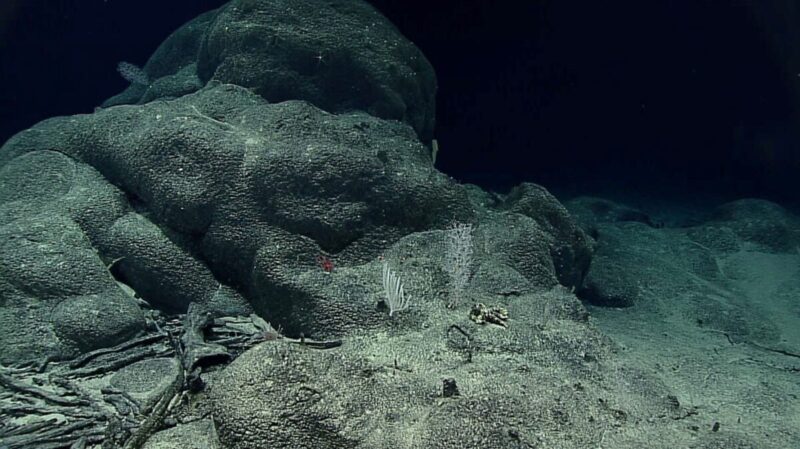
Seafloor Massive Sulfide Deposits 🌊🌋💨
Compared to these laterally extensive nodules or crusts, seafloor massive sulfide deposits cover a much smaller area of the seabed. They generally occur along mid-ocean ridges, where rising magma and a thin crust drive convection cells that scavenge metals into hot fluids, which discharge along hydrothermal vents into the ocean. Upon contact between these hot fluids (around 400°C) and the cold ocean water, metals precipitate and form characteristic sulfide chimney structures, which can grow up to 60 meters tall. When these chimneys collapse, layers of sulfide breccia, rich in copper, zinc, and lead—along with precious metals—form on the seafloor. Together with settled sulfide dust from the vents, these systems create significant accumulations of metals on the ocean floor and are generally regarded as modern-day analogs of certain types of terrestrial volcanogenic massive sulfide (VMS) deposits.
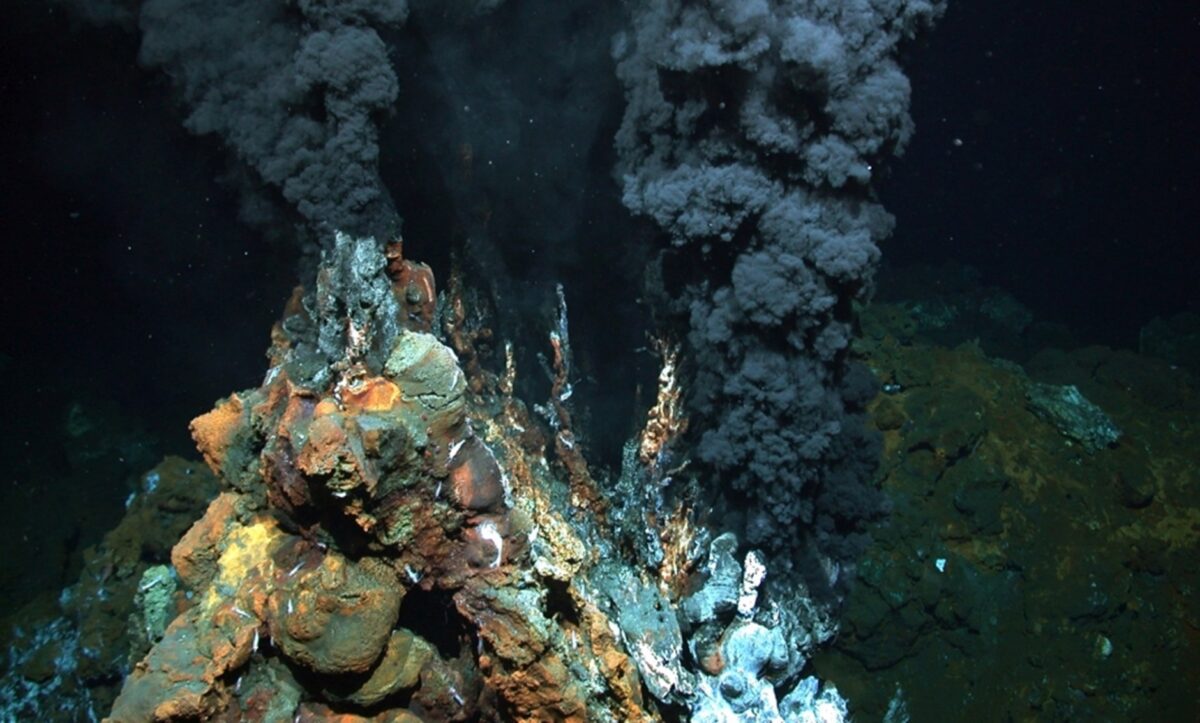
Distribution of Seabed Resources 🗺️
When it comes to the worldwide distribution of the different deposit types, a few important observations can be made. While most of the known polymetallic nodule deposits occur far offshore in international waters, some of the cobalt crusts and many of the sulfide deposits are located within the exclusive economic zones (EEZs) of independent countries, making their exploitation dependent on local politics. This has had and continues to have a significant impact on the potential future usage of these resources.
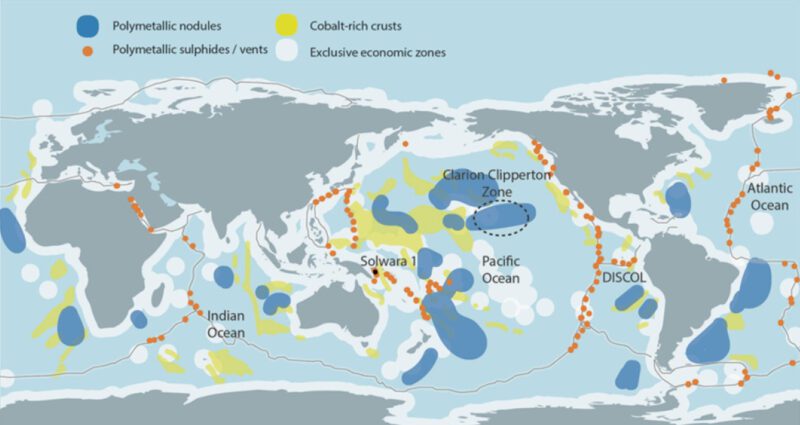
Seabed Mining Legislation 📜⚖️🏛️
To date, no mining of deep-sea deposits has taken place on a commercial scale, neither in international waters nor within the exclusive economic zones. One of the deposits that came closest to being exploited is the Solwara 1 massive sulfide deposit, located at a depth of around 1,500 meters within the exclusive economic zone of Papua New Guinea. While Nautilus Minerals, the company initially advancing the project, eventually went bankrupt, it undeniably contributed significantly to the deep-sea mining industry by developing new extraction techniques and pushing the limits of what is possible. The deposit is currently in private hands, with ongoing plans to mine it in the future.
Although some massive sulfide deposits, like Solwara, are of economic interest, the current focus of the offshore mining industry lies on the polymetallic nodules in the aforementioned Clarion-Clipperton Zone (CCZ) in the Pacific. Led by The Metals Company (NASDAQ:TMC), mining of these deposits is essentially around the corner, with the key technologies and equipment already developed. Currently, the main obstacle preventing the exploitation of these nodule resources is the lack of a comprehensive mining code and the issuance of related exploitation permits.
Unlike deposits on the extended continental shelf within the exclusive economic zones of independent nations, the CCZ lies in international waters in the middle of the Pacific Ocean, and is therefore governed by the United Nations Convention on the Law of the Sea (UNCLOS) and the subordinate International Seabed Authority (ISA). Formed as an international organization to manage the deep sea for the benefit of all humankind, the ISA regulates the exploitation of these resources and is responsible for developing the necessary legal framework, in other words, a mining code. Having already missed its initial deadline to produce such a document in July 2023, the organization is now expected to finalize the mining code by mid-2025.

Opposition to Deep Sea Mining ✋🚫
The reason behind this delay is the clash of viewpoints between those who advocate for the rapid commencement of seabed mining and those who call for more caution, a moratorium, or even an outright ban due to environmental concerns. In addition to the US not recognizing the International Seabed Authority (as it has not ratified the United Nations Convention on the Law of the Sea), NGOs like Greenpeace are fighting hard—sometimes literally—to stop seabed mining. Furthermore, there is a growing list of nations that want to halt or delay the exploitation of these resources based on environmental concerns.
Consequences of deep sea mining ⚠️🌊
While I have some suspicions about the real reasons behind certain countries’ strong opposition to seabed mining (for example, consider Eramet’s involvement in nickel laterite mining), there are legitimate concerns about the environmental effects of exploiting these resources. To best understand the potential consequences, it is crucial to examine the characteristics and proposed mining techniques for each of the different deposit types.
Regardless of the type of seafloor deposit, any underwater mining activity will inevitably result in noise pollution and lasting impacts on the seabed. Due to the better propagation of sound in water and the fragile ecosystems found on the seafloor, these effects are expected to be more severe than what we observe in terrestrial mining.
Polymetallic Nodules Mining 🔩⚪⛏️
When it comes to polymetallic nodules, the actual mining process is more akin to harvesting. The proposed technologies generally involve some type of rover that functions like a giant vacuum cleaner, sucking up a mixture of nodules along with the top sediment layer. The nodule-rich sediment is then transported to a “mining vessel,” where the nodules and sediment are separated, with the sediment subsequently pumped back down to the seafloor or discharged higher up in the water column.
While this type of mining doesn’t involve blasting or the direct removal of the seabed, it is believed to have negative effects on the ecosystems that have evolved around the nodules and within the top sediment layer. Moreover, both the mining activity and, more importantly, the secondary discharge of sediment back into the water column are expected to create sediment plumes. These plumes, depending on their extent (which is under debate), could further impact marine life within and potentially beyond the mining areas.

Manganese Crust Mining 🏔️🌊⛏️
Unlike nodules, the extraction of manganese crusts and seafloor massive sulfide deposits would involve actual mining, as the valuable metals in these deposits are embedded in the seabed and would need to be physically removed using heavy machinery. In the case of crusts, this process would require highly specialized equipment, as these deposits are often found in more uneven and rugged topography, such as submarine ridges. On a positive note, the risk of generating significant, potentially harmful sediment plumes is expected to be much lower for this deposit type, as the ridges are typically not covered by sediment.
However, due to the sediment-free environment and the good water circulation created by the mountainous terrain, these areas of the seafloor generally exhibit higher biodiversity than the plains, making the potential environmental impact more concerning.
Seafloor Massive Sulfide Deposits 🌊🌋💨⛏️
And what about modern-day VMS deposits? A significant red flag is their association with hydrothermal activity, placing them in some of the most biodiverse regions of the deep sea, albeit the planned mining is expected to take place around extinct, rather than active, hydrothermal fields. While mining these deposits would also involve the use of heavy machinery, the surface area impacted is much smaller compared to the vast lateral extension of nodule fields or crusts.
Deep sea vs terrestrial mining 🌊⛏️ vs 🏔️⛏️
So, what is your opinion on deep-sea mining? Is it a viable alternative to traditional resource extraction from land? While there are certainly several advantages compared to terrestrial mining—such as better resource yield, often little to no tailings, no infringement on local communities, cleaner ore, and generally higher grades—these regions of our planet are, without a doubt, barely understood. This makes any operations in these areas vulnerable to unknown consequences.
Perhaps the best way to frame the dilemma is that seabed resources are fundamentally integrated into complex ecosystems, whereas terrestrial resources typically are not. Beyond aesthetic concerns, most issues with terrestrial mining arise downstream. In contrast, deep-sea mining could directly disrupt delicate ecosystems.
From an objective standpoint, polymetallic nodules appear to be the most promising candidate for deep-sea mining, where the potential benefits might outweigh the negative impacts. However, the challenge with this type of deposit is that they almost always occur at great depths in international waters, and their exploitation depends heavily on the establishment of a universally recognized global mining code.
Scandinavia
So, how does this all relate to the Nordic countries? Well, most of the seabed between Norway, Greenland, and Iceland is under the governance of one of these countries, meaning it is entirely up to each nation to decide whether or not to open its waters for seabed mining. While I couldn’t find specific information on Greenland’s and Iceland’s (very briefly touched on the subject in a previous article) plans, Norway has made it clear that it aims to establish itself as a pioneer in this emerging industry, regardless of what happens at the international level.
Norway 🇳🇴
In the early 2000s, Norway began to realize that its continental shelf wasn’t just rich in oil and gas but also held vast deposits of valuable metals, estimated to be worth hundreds of billions of dollars. As a nation with a strong offshore sector and access to some of the world’s most advanced deep-sea technologies, Norway set to work on creating a regulatory framework for future exploration and mining activities on its continental shelf. This effort culminated in the Seabed Minerals Act, which came into effect in 2019.
As the next step, a proposal to open approximately 280,000 km² of its continental shelf for metal extraction was brought before parliament in the summer of 2023. It was ratified at the beginning of 2024, sparking significant media backlash from other countries and NGOs that would have preferred Norway to wait until the International Seabed Authority (ISA) published a global framework for seabed mining.
After the King officially adopted the proposal in April 2024, the Norwegian Offshore Directorate began preparing for the first licensing round. Following consultations with stakeholders, the directorate proposed a total of 386 blocks, representing approximately 38% of the total opened area, to be made available for application in the first licensing round (yellow blocks shown on the map below).
With the public consultation period ending on September 26, 2024, the directorate is expected to officially invite interested parties to apply for extraction permits.
Deep Sea 🦀 vs Terrestrial 🏔️ Mining Code 📜
Although the first extraction permits are expected to be granted by 2025, the terminology can be somewhat misleading, especially when compared to land-based mining. On land, exploration permits typically precede any extraction permits. While the Seabed Minerals Act does allow for the issuance of exploration permits, these do not grant exclusivity over resources discovered in a specific area.
The newly available extraction permits, however, do provide exclusivity, which explains why companies are eager to secure these rights before investing in costly resource-definition activities. Without such exclusivity, there is a risk that others could claim the same areas, creating uncertainty and deterring investment.
No Immediate Extraction 🚜
It’s important to note that securing an extraction permit by no means allows companies to immediately begin mining the seafloor. First, they must identify and define economically viable resources and demonstrate that it is technologically feasible to extract these resources in an environmentally responsible manner—a process that, depending on the area, could take years or might never come to fruition.

Companies Expected to Apply for Licenses in Norway
While there may be other companies involved that I am not aware of, the following companies have publicly stated their intent to apply for blocks in the first licensing round:
Green Minerals AS (GEM.OL): A startup focused on exploring and mining seafloor massive sulfide deposits on the Norwegian shelf. They also have some exposure to the Clarion-Clipperton Zone (CCZ).
Loke Marine Minerals: A private Norwegian company that holds licenses in the CCZ and aims to secure blocks in Norwegian waters as well.
Adepth: A technology-focused company that is also expected to apply for exploration and mining rights on the Norwegian shelf.
Sweden 🇸🇪
At first glance, you wouldn’t expect Sweden to be involved in this kind of industry within its territorial waters, given that most seabed resources are found at significant depths. However, the Baltic Sea is somewhat unique, as it is known to host significant deposits of polymetallic nodules, despite its average water depth being only around 50 meters. While these nodules have similar manganese and iron content compared to their deep-sea counterparts, they tend to contain lower grades of more valuable metals like nickel and copper. In deeper waters, this composition would likely make extraction uneconomical, but their shallow occurrence in the Baltic Sea could make them quite appealing.
This potential has not gone unnoticed. Scandinavian Ocean Minerals, a private Swedish company, is currently investigating the potential of these nodules in detail. The company is working on plans to extract the nodules from the northern parts of the Bothnian Basin. In addition, they have plans to use their extraction technology to help combat the eutrophication of the shallow ocean by removing parts of the oxygen-consuming bottom sediment and transforming it into biogas, among other uses.
As in Norway, it is not the Mainland Minerals Act that governs seabed activities. In Sweden, the governing law is the Swedish Continental Shelf Act, with permitting-related matters currently being handled by the Swedish Geological Survey.

Finding this topic quite fascinating, I will add these companies active in the Nordics to my watchlist. So, if you haven’t done so already and are interested in staying up to date on what’s going on in the Nordic raw materials industry, consider subscribing below.
/TheNorthernExplorer

